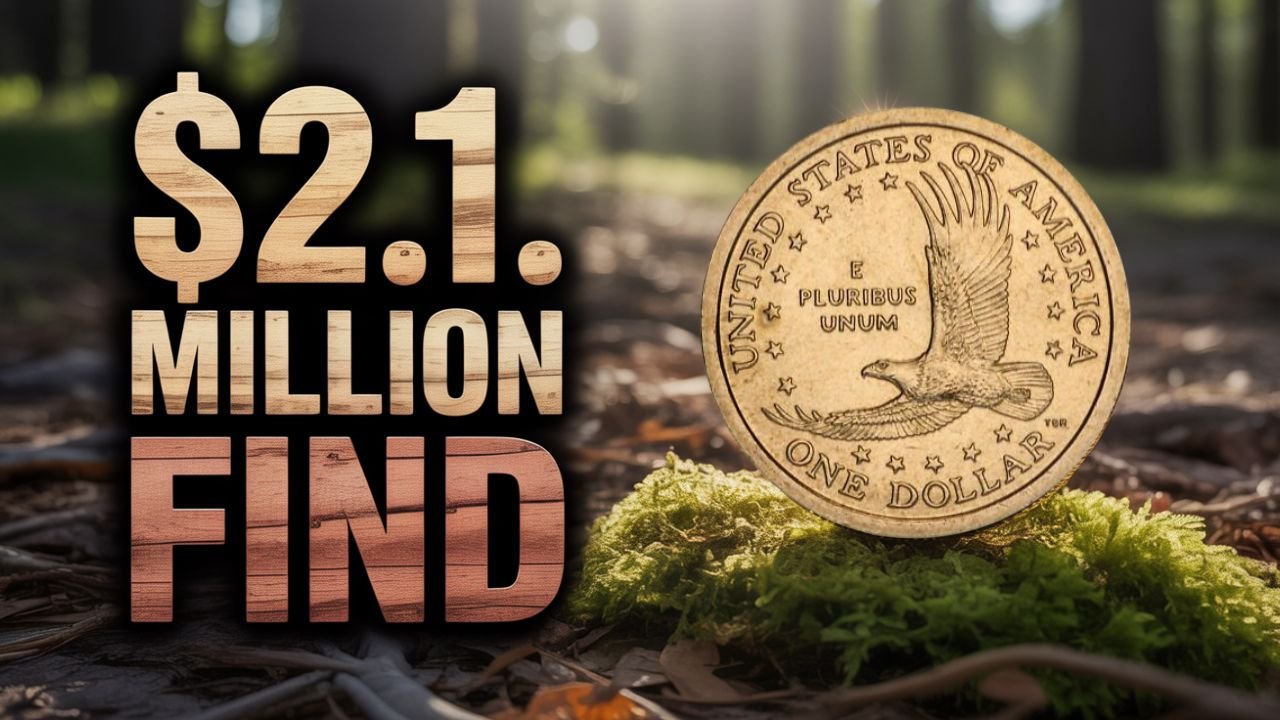Coin collecting isn’t limited to old or historical coins. Sometimes, even coins minted in modern times harbor rarities that have etched their names into the pages of history. One such coin is the Sacagawea Dollar, a special edition of which has become legendary among numismatists. In this article, we’ll explore the story of this special coin and understand what makes it unique and valuable.
The Origin of the Sacagawea Dollar
In 2000, the U.S. Mint issued a new golden dollar coin featuring the image of Sacagawea. Sacagawea was a young Shoshone woman who guided Lewis and Clark on their westward journey.
This coin’s design was completely different from older dollar coins. It was golden in color because it was made of a manganese-brass alloy. The obverse depicted Sacagawea holding her infant son, Jean Baptiste, while the reverse featured a vulture, considered a symbol of strength and freedom.
Although millions of coins were issued to increase the everyday use of dollar coins, this effort failed to achieve the desired success.
[also_read id=”450″]
The Coin That Shouldn’t Exist
The Sacagawea dollar is rare not because of a low production run, but because of a minting error. The obverse of some Sacagawea coins was mistakenly combined with the reverse of a statehood quarter.
This error occurred during trial production at the Philadelphia Mint, where designs and machinery are tested before mass production.
This mistake resulted in a coin with the following characteristics:
- Sacagawea’s portrait on the front
- Quarter or Statehood design on the back
- Gold color
These experimental coins were never produced for general circulation, but at least one was discovered outside the official process, sparking scrutiny and discussion.
—
How to Identify This Unique Coin
If you or someone else has this rare coin, there are a few key things to pay attention to:
- Mismatched Reverse:
The most obvious identification is the design on the reverse. It should resemble the 2000 Statehood Quarter, but with a portrait of Sacagawea on the front and a gold color. - Weight and Color:
The Sacagawea dollar weighs approximately 8.1 grams and has a different metal composition. If a coin is of this weight and metal content but displays the quarter design, it may be a test error. - Mint Mark:
Known test coins came from the Philadelphia Mint, so the presence of a “P” mint mark is another indication.
Since this error occurred only for a limited time, it is difficult to find in everyday transactions, but not impossible. This makes it an exciting find for coin collectors.
[also_read id=”450″]
Educational Significance of Coin Errors
This rare Sacagawea-Quarter hybrid is not just a valuable coin. It shows us the process of coin manufacturing and how a simple mistake can create history.
From an educational perspective, this coin teaches several important lessons:
- Understanding the Minting Process: Every U.S. coin is produced after detailed planning, design, die pairing, and striking. This type of error is rare.
- The Role of Design: Coins are national symbols. The misattribution of a quarter to a cultural and historical figure like Sacagawea raised questions about its identity and significance.
- Authentication Skills: Recognizing the edges, weight, and design alignment of coins is part of being a thoughtful collector, not just a treasure hunt.
Thus, this rare version of the Sacagawea dollar is not only valuable, but also an exciting chapter in the world of coin collecting and American currency history.
FAQs
Q1. What makes the rare Sacagawea dollar so valuable?
It is valuable because of a minting error where Sacagawea’s front was combined with a state quarter reverse, creating a unique and extremely rare coin.
Q2. How many of these error coins exist?
Only a few experimental coins are known to exist, making them exceptionally rare and highly sought after by collectors.
Q3. How can I identify this rare coin?
Look for Sacagawea on the front, a quarter design on the back, golden color, weight around 8.1 grams, and a possible “P” mint mark from Philadelphia.
Q4. Was this coin ever meant for circulation?
No, these were experimental coins created during a test production phase and were not intended for public circulation.
Q5. Why is this coin important beyond its monetary value?
It demonstrates the coin minting process, highlights the importance of design, and teaches collectors how to authenticate coins carefully.
